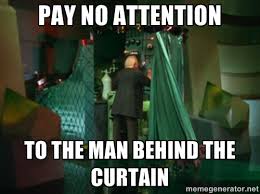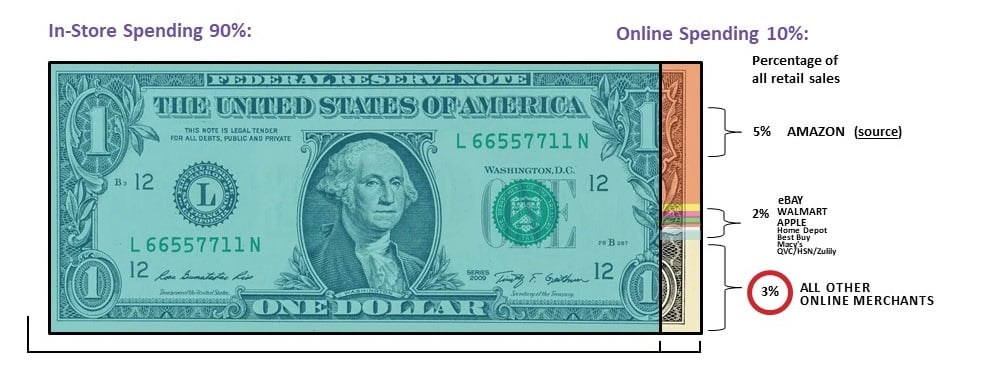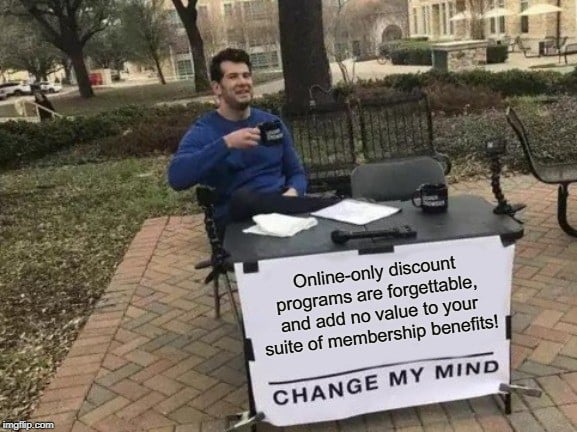How Amazon is Killing Free Discount Programs
Amazon.com dominates the e-commerce space, and is otherwise wreaking havoc on free white-labeled discount programs. Only discount programs with in-store coupons can deliver real value to your members/customers. About a 4 minute read
Image: BEN VOLDMAN
Over the past few years, I’ve seen more and more membership organizations deliver value-added benefits to the perks and incentives they offer their members.
It’s not just a good thing, it’s a great thing.
And you can thank Amazon® for that— at least to some degree. Their focus on delivering high value benefits to their Prime members has raised the bar for all membership-based organizations. If you’re not offering compelling, meaningful benefits to your members, be prepared to have them bail on you.
When it comes to Amazon’s impact on membership organizations, I believe we’re only seeing the proverbial tip of the iceberg, as I doubt their influence will decline any time soon. And because I’m interested in helping benefits and membership professionals make good decisions, I’d like to show you how Amazon is impacting our world of membership benefits, and more particularly, loyalty discount programs.
Discount Loyalty Programs That Work
In today’s membership economy, offering compelling benefits is really the only way to ensure your organization’s value equation has enough oomph to keep your members engaged and renewing year after year. Delivering high value benefits is crucial to growing your organization. If you scrimp on your benefits, you’re making it easier for members to churn away.
I’ve consulted with a countless number of membership groups. Some are very large and others are rather small. But most all have embraced our white-labeled discount program to help their organizations grow.
The ongoing success of our type of discount network has spawned a wave of upstart competitors who claim to have their own special collection of consumer discounts that are “almost as good” as what we offer. In fact, some programs are so “special” they’re willing to give it away to your organization for free.
But here are a few things you need to know.
Free Discount Programs
Most free discount programs would rather not have you “look behind the curtain,” and figure out why they don’t need to charge you anything, yet still stay in business. With just a little digging you’ll learn nearly all of their discounts are are redeemed online. That's because they need to make money off of each online transaction.
What they do is plug in to an online affiliate program/ad network to grab all their discount content.
What are affiliate programs/ad networks?
They’re companies like these that aggregate publicly available online discounts and advertisements and find as many organizations (like yours) who are willing to publish their content on their website.
Because these free programs take a cut from each online transaction, they don’t need to charge you a fee, (even though some still do...go figure.) Even if a 75% off in-store coupon landed in their laps, they would think twice about showing it to your members. If they can’t make money from it, they have no motivation to get that offer for your members. It’s simply too much work to acquire and maintain.
The Heavy Lifting
In-store, brick-and-mortar redeemed discounts are proven to be the most engaging, the most exciting, and the most frequently used and redeemed. I’m talking about deals at local restaurants, retailers, movie theaters, auto service centers, home and garden centers, etc. These are the places we visit every Saturday when we do our “honey-do” list. The stores we shop at on a daily, weekly and monthly basis.
Acquiring these offers requires a lot of heavy lifting. For each offer it involves calling a business owner and getting them to talk to you. Then you need to negotiate a discount offer, sign a contract, gain approval of the final coupon. You also need to follow up to make sure the owner is still in business after a few months, and is still honoring the coupon. The work increases exponentially if you have a nationwide audience. It takes a lot of time, effort and investment to get these types of deals in communities nationwide.
Instead, these free programs try to convince you that their online-only discount network is as good as an in-store discount.
Don’t believe it.
The amount of savings for most online discount programs averages in the range of just 8%-12% off. For programs with in-store discounts, the average discount is in the range of 25% to 35% off, and some are even 50% off or BOGO.
If your organization is considering a discount loyalty program, it’s critical to know what to watch out for. For the sake of time, I’ll forego a detailed discussion about some of the ways they get you to buy from them, but this article shows you the the tricks some discount programs use to trick you. You may also want to check out this article talking about the keys to look for when selecting a discount program.
I now want to focus on recent developments in the world of online retailing and show you how Amazon is making its impact felt throughout our membership loyalty industry.
Amazon and the e-Commerce Landscape
According to a recent Bloomberg article, Amazon.com now accounts for roughly half of all online sales. If you count other retailers re-selling their products on Amazon, then this massive e-tailer accounts for roughly 76% of all online ecommerce. But for the sake of argument and the ease of calculating, I’ll ignore the re-sellers for now.
There’s no doubt that online shopping has grown significantly over the last decade. But the headlines about the “retail apocalypse” have led many to believe that online shopping has replaced in-store shopping. If you see store closings in your neighborhood like Sears or ToysRUs or Payless Shoes, you may have concluded that in-store retail is getting killed by online retailers.
You may also have seen recent headlines like: “E-commerce grows another 15%” or “Online sales grow 13.6% in Q2,” which further confirms your assumption that brick and mortar retail sales is dead, or at least dying. But these headlines obscure the most important story: e-commerce accounts for a small percentage of overall retail expenditures.
According to the U.S. Census Bureau’s quarterly e-commerce report, roughly 10% of all retail expenditures happen online. That means consumers spend 90% of their disposable income at local brick and mortar stores. I’m not making this up. Check these sources and these sources if you don’t believe me.
Here’s a graphic showing what it looks like:

Breaking down all online spending, after Amazon’s 5%, another 2% of consumer spending goes to giants like Ebay, Walmart.com, Apple.com, HomeDepot.com, Best Buy.com, Macys.com and QVC. Most of these merchants don’t offer meaningful discounts through a private discount network because they can generate enough business on their own. That leaves the tens of thousands of other online retailers fighting for the remaining 3% of the consumer wallet.
That's not to say the online discounts don't have their place in a good discount program. What it means is this: if your discount program consists of mostly online redeemed offers, your attempts at engaging your members/customers will fall flat because the discounts will be irrelevant for 97% of their retail purchases.
What loyalty program can have an impact on member retention and engagement if it’s irrelevant 97% of the time?
From Bad to Worse
While we’re on the subject of Amazon making free, online-only discount programs irrelevant, here’s some more bad news for these programs:
Let’s say a free online-only discount programs offers your members a 15% off discount on a popular commodity like consumer electronics, appliances, clothing or furnishings, etc. According to this article, 80% of consumers check Amazon first before making any online purchase. Consequently, Amazon’s dominance will impact all your online discounts because most of your members are likely to go to Amazon to comparison shop for the best price.
I will also point out that well over 100 million Americans now have access to an Amazon Prime membership which includes free shipping. That means your online-only discount program is competing head to head with Amazon, not only on the price but on shipping as well.
Guess who usually wins that battle?
How Discount Programs Stack Up
It only takes once for your members to realize your free discount loyalty program doesn’t stack up. And with Amazon now bearing down on these programs, it’s an unenviable position to be in.
If you offer your members a discount program, make sure they see compelling local, in-store value the first time they visit, or they’ll never bother coming back. As the saying goes, you only get one chance to make a first impression.
I admit I’m just a little biased when it comes to what counts as an engaging discount program, so please forgive my bravado. But I challenge anyone to convince me that a free, online-only discount program can attract and engage members to any meaningful degree, especially when compared to the engaging power of an Access white-labeled discount program.
Go ahead. Change my mind.

Topics: Customer Engagement, private discount programs, customer loyalty, Member Success, amazon.com
Written by: Gary Toyn






.jpeg)







Share your Comment.